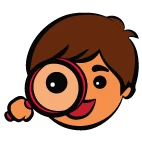DIY Cube Bubbles

Spending quality time with my kids is the most important task of my week. But with all the other things I need to do, playing Barbie dolls or hide and go seeks seems a rip off of my time and let's just say it, it gets boring fast.
Because my passion is all things sciencey, I naturally want to share my love of the exploration of life with them. Over the years I've come to realises that engaging with my children mean sharing my interests and inviting them into my world as well as going into theirs. So with much enthusiasm and excitement lets explore bubbles and what we can do with them.
Cube bubbles are one of those cool, quick projects that offer a good mixture of fun creation and scientific concepts. All you need is:
- A bunch of pipe cleaners
- Scissors
- Warm water
- Dishwashing liquid
Once you're ready here is the video of how to make your own Cube Bubbles and below that are the steps;
Create a square with one pipe cleaners by twisting one end together and pinching the corners to form the square.
- Create two more squares with two more pipe cleaners. Cut one side free from each square. Twist the open ends around the completed square from step one.
- With the two pieces of cut pipe cleaner join the two ends to complete the cube wall.
- Add one more pipe cleaner as a handle by twisting it around two cube walls. This will help with bubble formation.
- Add warm water to a container and slowly add dishwashing liquid. Stir gently and avoid making bubbles.
- Dip the cube in using the handle. If you don't get a cube bubble first try to add a little more dishwashing liquid or tilt the cube when putting it in the water.
- Blow into the bubble with a straw and see what happens.
So what the scientific concepts behind bubbles that suitable for kinder aged kids?
- Bubbles are air inside a soapy liquid film. The outside layers of this film are soap and between these soap layers is a layer of water.
- Bubbles and are round because once the air is sealed inside it, it shrinks to the smallest surface area possible for the volume of air inside. That's a sphere.
- Cube bubbles work because the soap liquid sticks to all six sides of the cube and creates a larger surface area than needed. This allows the cube-shaped bubble to form!
- A bubble pops because some of the water inside the layers evaporates and becomes unstable.
Heres a tip for Kids Science at home - When I take on a new project my technique is to start creating it without asking my little ones to join in. That probably sounds weird but It works a treat. As they see me doing something new in front of them their curiosity is engaged and a conversation about what I'm doing starts. I also help me not to get that feeling that I'm 'telling' them what to do. Rather I allow them to copy me or design their own experiment with the materials I have about awhile talking about what I'm doing.
One last tip. Be open to it taking a different direction with your kids. Allow them in the driver's seat. You can still create your own creation to play with and talk about but allowing them to explore will help build real connections to knowledge and enjoy the experience more.
For more information about fun, educational activities for kids, please contact the expert contributor.


